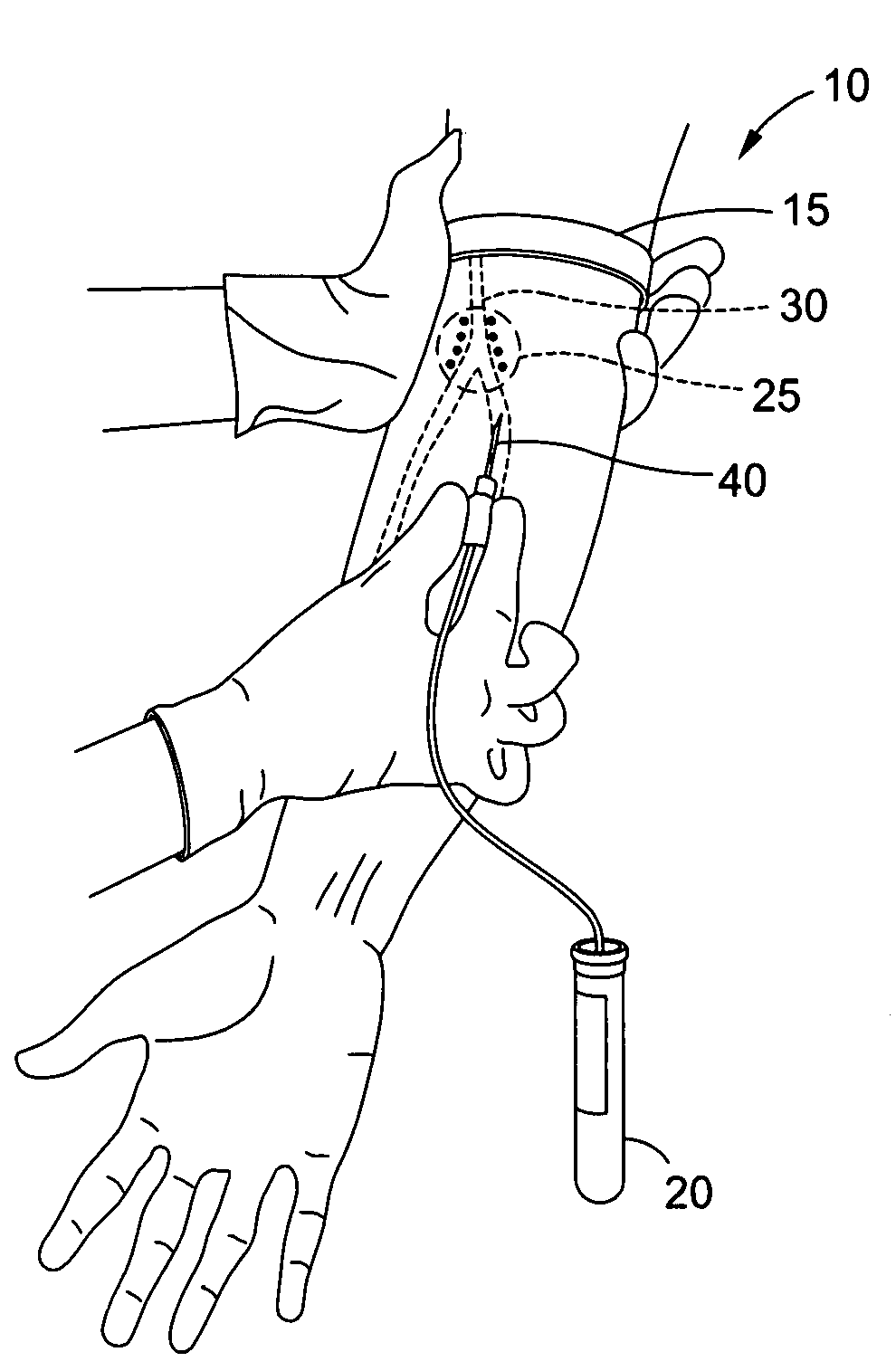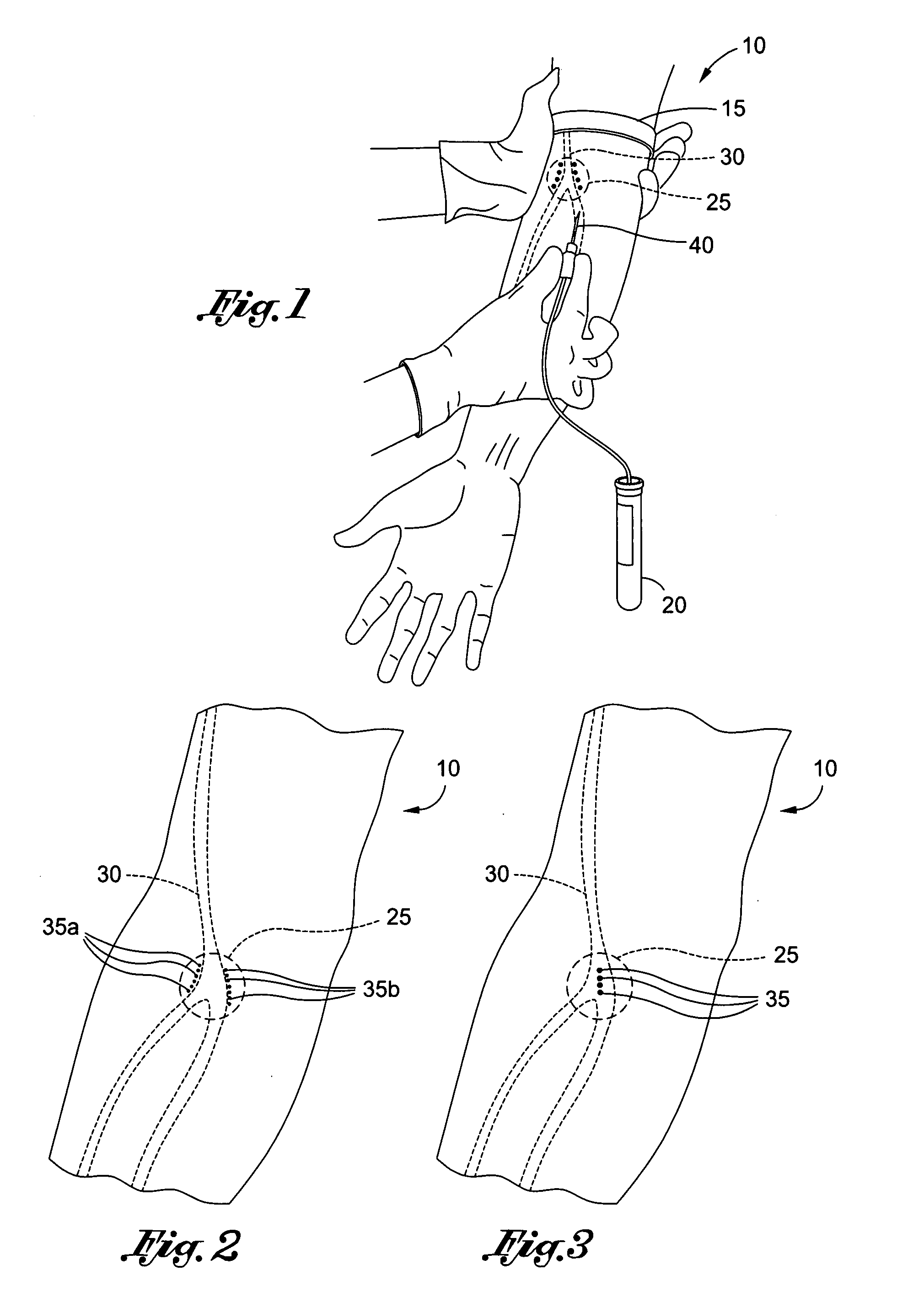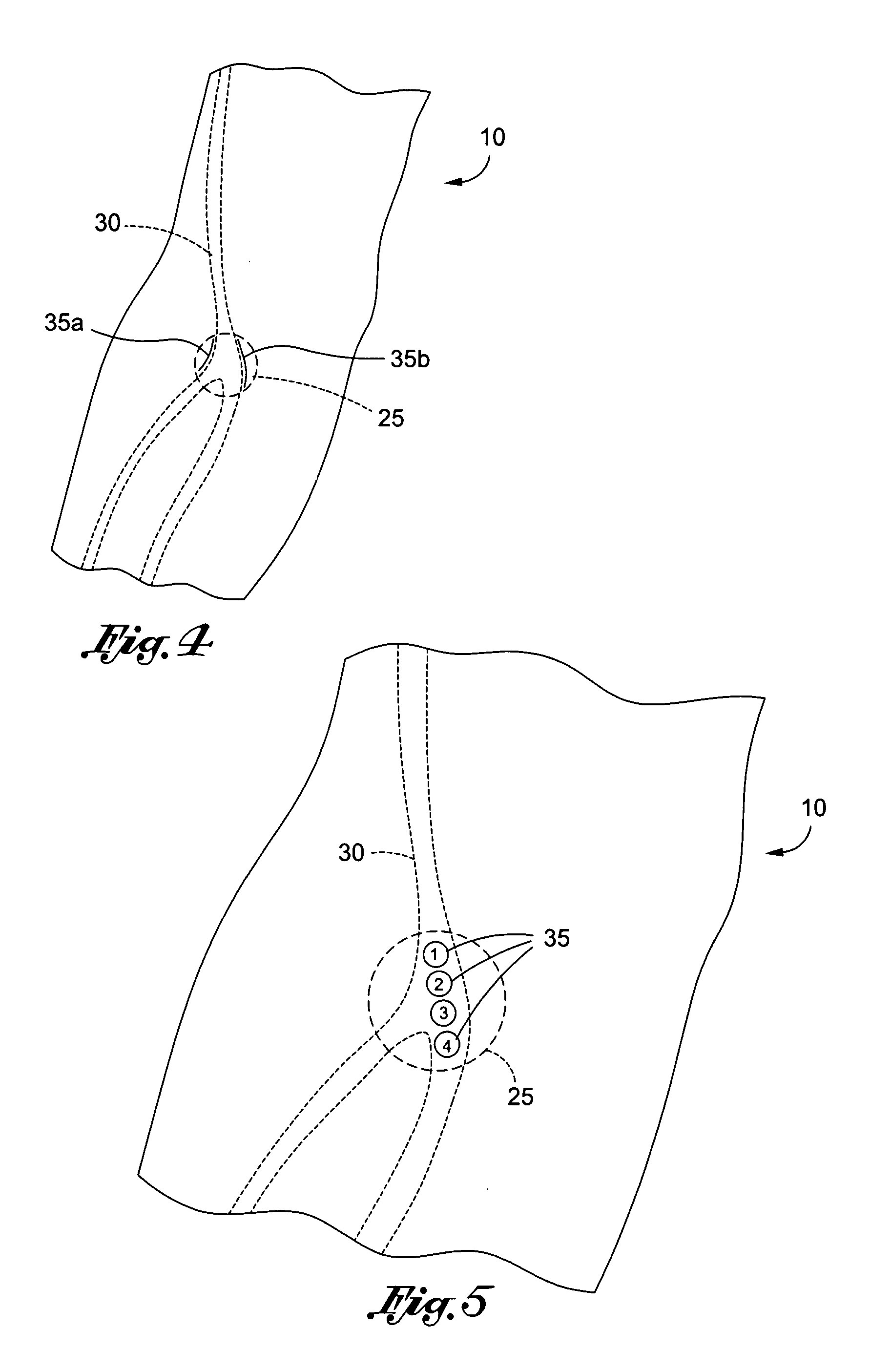Method of locating vessel puncture access sites via tattoo or permanent marking
a technology of access sites and puncture punctures, applied in the field of method of locating vessel puncture access sites via tattoo or permanent marking, can solve the problems of inability to successfully venipuncture, inconvenient frequent blood draw, and inability to achieve successful venipuncture, etc., to facilitate the introduction or withdrawal of fluid.
- Summary
- Abstract
- Description
- Claims
- Application Information
AI Technical Summary
Benefits of technology
Problems solved by technology
Method used
Image
Examples
Embodiment Construction
[0029]The detailed description set forth below is intended as a description of the presently preferred embodiment of the invention, and is not intended to represent the only form in which the present invention may be constructed or utilized. The description sets forth the functions and sequences of steps for utilizing the invention. It is to be understood, however, that the same or equivalent functions and sequences may be accomplished by different embodiments and that they are intended to be encompassed within the scope of the invention.
[0030]FIG. 1 illustrates a diagram of the inner side of the right arm of an individual, which is generally designated by the numeral 10. A medical professional, such as a phlebotomist, has inserted a needle 40 into a vein 30 of the individual for the purpose of drawing blood, or other fluid, from the vein 30 of the individual in connection with an evacuation tube 20. The individual has a tourniquet 15 around the upper portion of the arm 10. The arm ...
PUM
 Login to View More
Login to View More Abstract
Description
Claims
Application Information
 Login to View More
Login to View More - R&D
- Intellectual Property
- Life Sciences
- Materials
- Tech Scout
- Unparalleled Data Quality
- Higher Quality Content
- 60% Fewer Hallucinations
Browse by: Latest US Patents, China's latest patents, Technical Efficacy Thesaurus, Application Domain, Technology Topic, Popular Technical Reports.
© 2025 PatSnap. All rights reserved.Legal|Privacy policy|Modern Slavery Act Transparency Statement|Sitemap|About US| Contact US: help@patsnap.com



